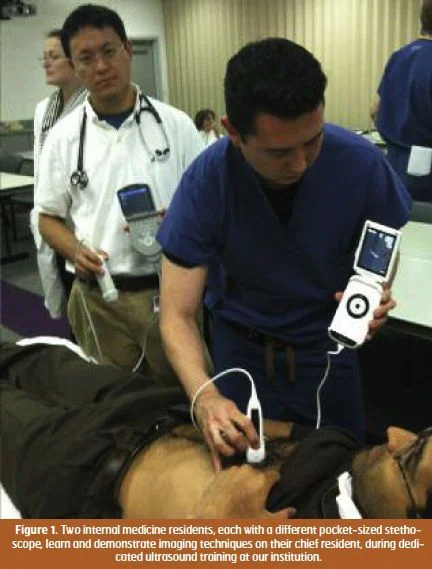HealthManagement, Volume 14, Issue 3 /2012
Accurate First Impressions Crucial
Obtaining an accurate initial diagnostic assessment is the goal of every clinician, but has particular life and cost savings in the patient who presents acutely ill or in a remote location. Perhaps due to revealing features unique to the presentation and to optimise patient throughput, our initial patient assessment is typically "front-loaded." As time and clinical stability permit, we place more effort at the first encounter in obtaining historical data, admission lab testing and imaging as compared to subsequent visits. The provisional diagnosis that emerges from this interaction is therefore often unquestioned and treatment is usually initiated, often with ensuing consultation and confirmatory testing. Early diagnostic errors could have disastrous outcomes both in patient survival and costs, by resulting in inappropriate triage, tests, treatments, or extended hospital stays. Therefore, a more accurate "first impression" of the patient's illness could reduce time-todiagnosis, which in turn would minimise costs and medical errors. Physical exam skills once relied upon for immediate diagnosis have deteriorated over the years, partly supplanted by sophisticated point-of-care lab testing and imaging. In particular, exam skills using the indirect methods of percussion or auscultation for cardiopulmonary or intra-abdominal pathology have been lost or abandoned. Few physical exam findings of these internal regions, other than pulselessness and wheezing, will elicit immediate treatment without more confirmatory testing. In addition, the difficulty of performing auscultation and percussion in noise-filled emergency rooms or intensive care units and the minimal time for patient exam limits the use of time-honoured physical exam techniques. This evolution away from older, traditional practices may be justifiable, as evidence- based scrutiny is lacking for many of these subjective exam techniques when applied in contemporary settings.
What Role Does Pocket-Sized Ultrasound Play?
It is against this background that pocket-sized ultrasound devices have emerged. Amidst other tools that appear simplistic in comparison, such as the sphygmomometer, traditional binaural "stethoscope" and reflex hammer, the ultrasonic stethoscope ultimately fulfills its own definition by allowing us to finally "see" pathology that centuries-old methods such as percussion and auscultation had us infer about the lungs, heart and intra-abdominal spaces. Laptop-sized, hand-carried ultrasound platforms have existed for years and have great versatility, inspiring the bedside use of ultrasound for limited exam and procedural guidance as in the case presented. However, much like application of an electrocardiograph, these larger, luggable devices must be found in the corner of the department and wheeled by cart to a patient's bedside that is already cluttered by personnel and equipment. The distinct advantage of the pocket-sized device is the on-the-spot immediacy and convenience of its use as part of the physical exam and not as a separate diagnostic procedure. The limitations of these devices when compared to standard equipment are yet to be fully understood and are likely related to its accuracy during difficult ultrasound applications, including difficult windows in need of advanced image optimisation techniques or in the detection of subtle findings such as wall motion abnormalities.
Getting a Clue to Diagnosis
Despite novelty, appeal and modest costs (less than 10,000 dollars per device), pocket- sized ultrasonography will encounter many challenges to widespread adoption. In order to generalise and standardise use, there will be the need for development of suitable imaging protocols for these smaller devices, akin to the cardiac physical exam. Prior cardiac hand-carried ultrasound studies have been biased by examining advanced imaging by cardiologists or use by highly motivated noncardiologists and demonstrate limitations in accuracy and performance relative to the complexity of the imaging protocol employed.
The imaging protocol in the case presented, CLUE, is a prototypical application for bedside ultrasound and is wellsuited for pocketsized devices. CLUE is brief, avoids the complexity of Doppler, and provides diagnostic and prognostic information. Although CLUE will miss subtle diagnoses such as endocarditis and isolated wall motion abnormalities, the application time (less than five minutes) and training requirements are comparable to that of auscultation, making it suitable for use by all physicians who need immediate bedside data on cardiopulmonary structure and function. CLUE will increase the sensitivity of the initial evaluation for cardiopulmonary disease and, particularly in patients with unexplained dyspnea or hypotension, could result in earlier, more accurate referral for echocardiography, CT imaging, and cardiac or pulmonary consultation.
Once full-body imaging protocols have been developed for pocket-sized ultrasonography, validation of the accuracy and clinical impact of this "ultrasonic physical" upon outcome can be performed, a requirement never fulfilled by currently employed physical exam techniques. Research, coupled with consensus opinion, could define the accuracy and competency requirements necessary to train a generation of physicians in bedside ultrasound. CLUE instruction can be successfully incorporated into the formal internal medicine curriculum as it has for years at the authors' institution, despite the recent mandatory reductions in residency hours (see Figure 1).
Implications for Standard Studies
In addition to the salutary influence on initial diagnostic impressions, limited or screening ultrasound exams may have profound consequences on referral for conventional ultrasound testing. Multiple studies have been performed to project the diagnostic and cost effects of a "limited" echocardiographic exam upon referral for a standard echocardiogram. These studies suggest that the advantage of more accurate limited bedside exams is in the reduction of unnecessary testing of low-risk subjects. In the utilisation of echocardiography for suspected mitral valve prolapse, a limited echo screening strategy in which only abnormal limited studies would invoke referral for a comprehensive exam projected a 50 percent reduction in echo costs through the elimination of essentially normal studies.
Conversely, the high sensitivity of bedside ultrasound will increase the number of referrals for formal studies for suspected abnormalities that may be purely incidental or asymptomatic. The frequency of incidental echo abnormalities can be significant in certain populations, approaching 80 percent in elderly male inpatients. The cumulative effect on cost, missed diagnoses, and study volume will remain unknown until a screening bedside cardiac exam is formalised and minimal competency requirements are defined. However, the overall effect of an improved bedside exam may support a laudable, costneutral goal of shifting conventional ultrasound resources away from a healthy normal population and towards a more ill population with unsuspected disease.
Conclusions
Device application and novel ultrasonic exam "signs" will need to be elucidated in the coming years. Current medical practice is much more circumspect of the cost and effect of any additional diagnostic techniques, particularly those with accuracies that vary with physician skill, and will require evidence-basis for clinical application of these devices. The true determinant of the success of the ultrasonic stethoscope will be in whether it can disseminate into general medicine and not simply be a sophisticated tool for expert subspecialties. Although it seems likely that pocket ultrasound could improve any physician's immediate bedside impressions, questions remain regarding how the overall diagnostic accuracy and costs of this skill-dependent, subjective technique will integrate with the objective data of conventional laboratory and radiographic imaging. At the present time, further studies are necessary to formulate and test the accuracy of robust imaging protocols suitable for these smaller instruments.







